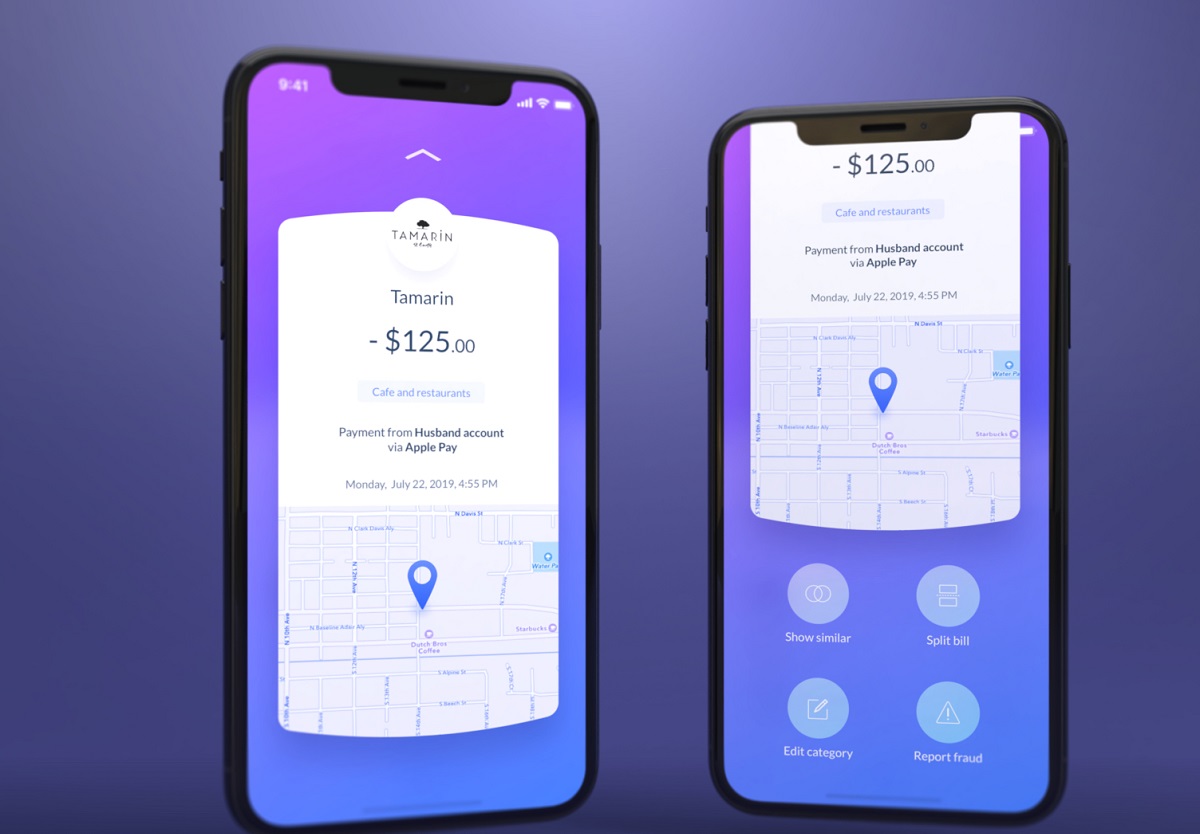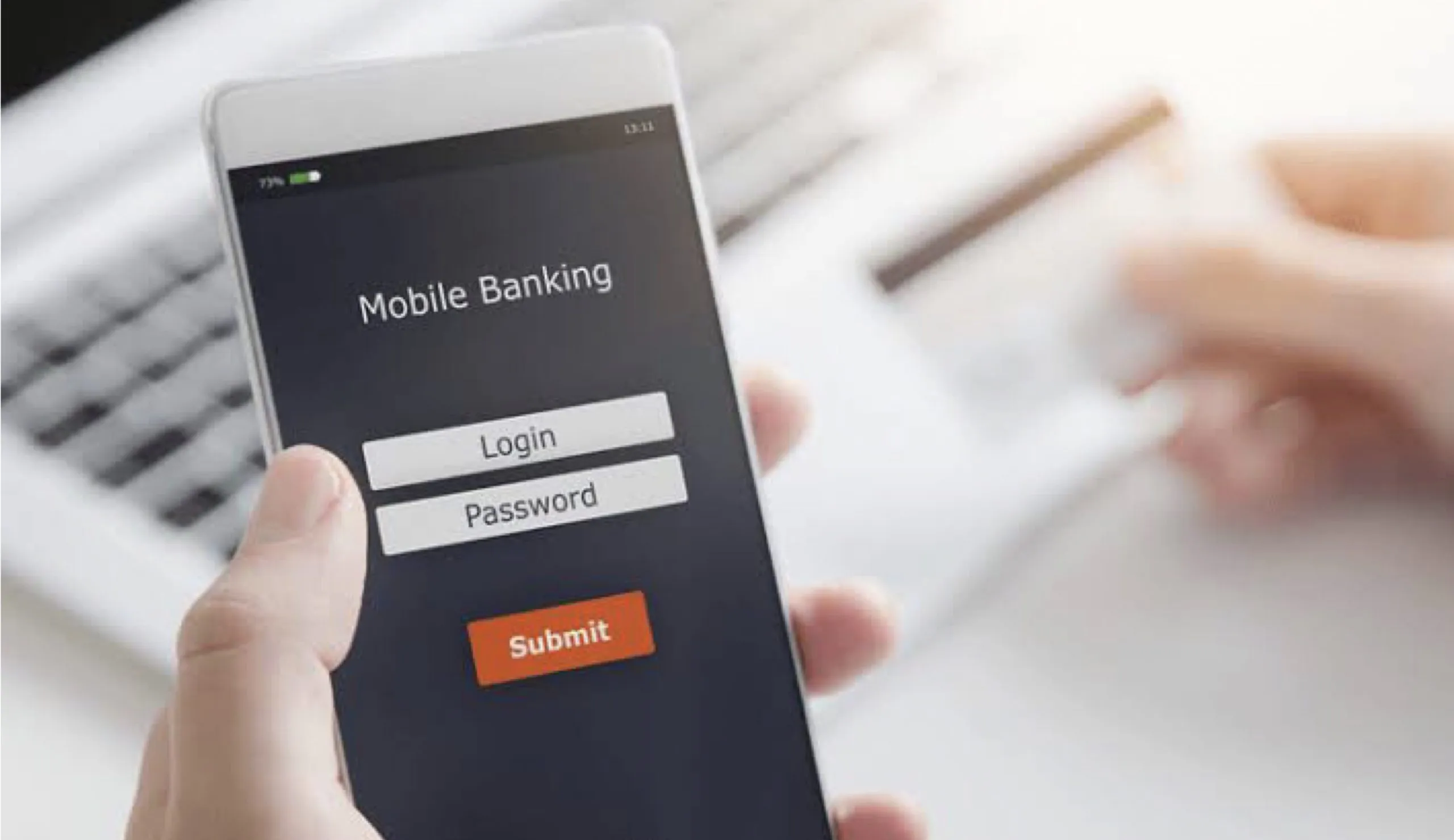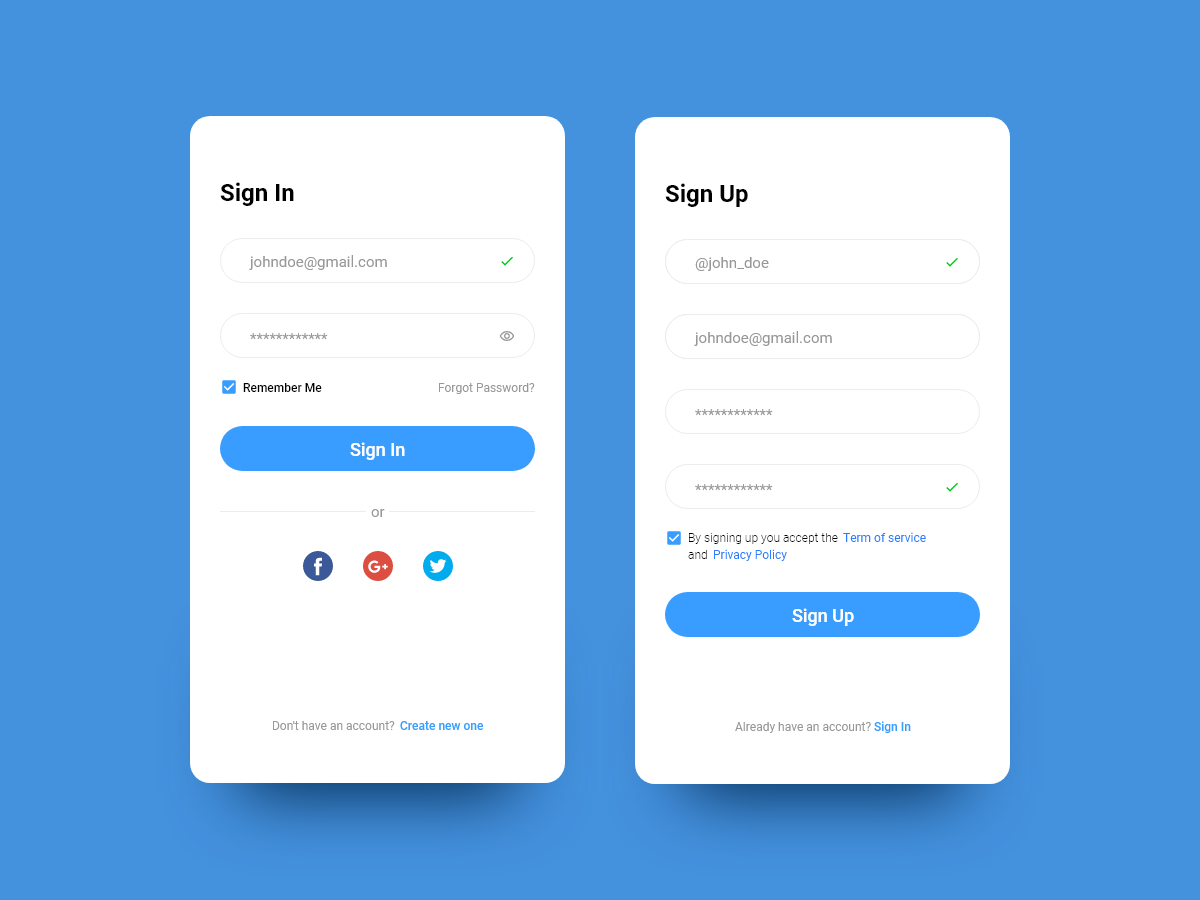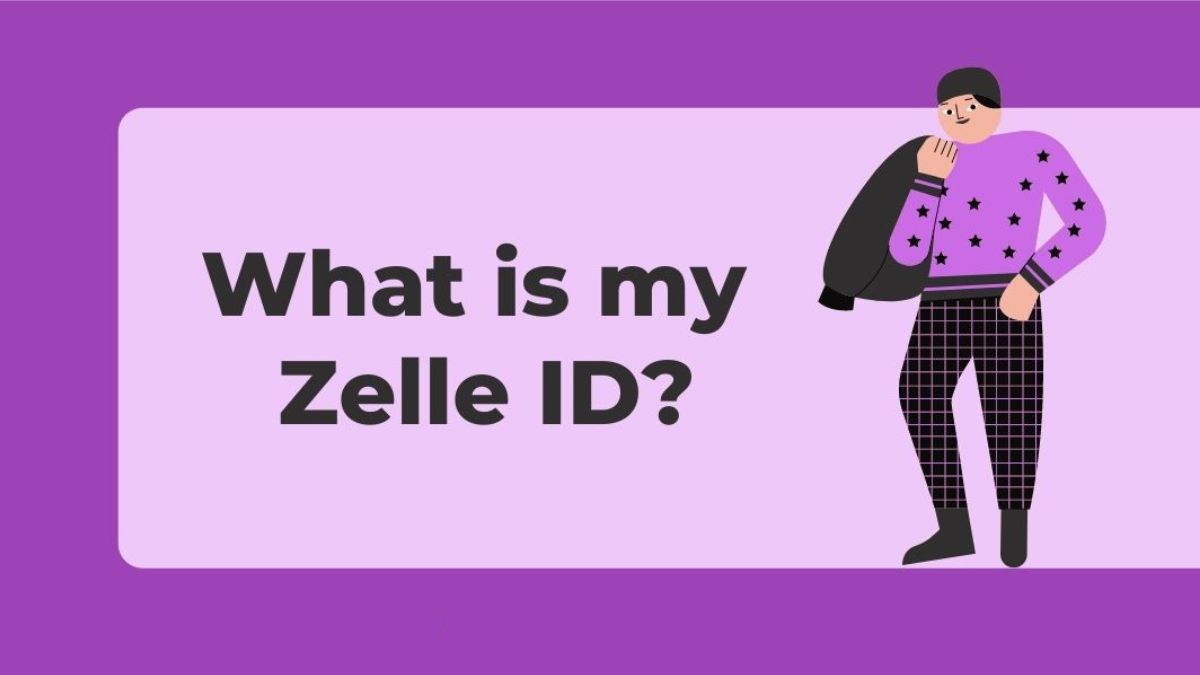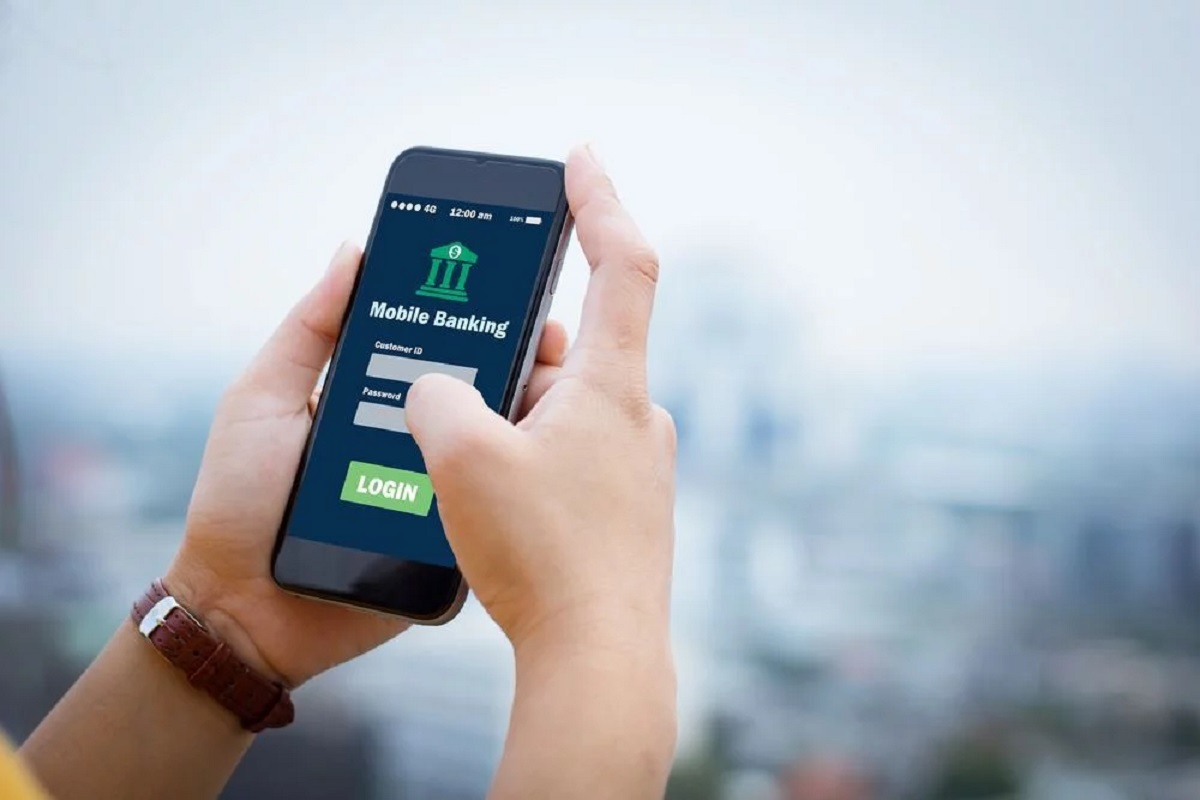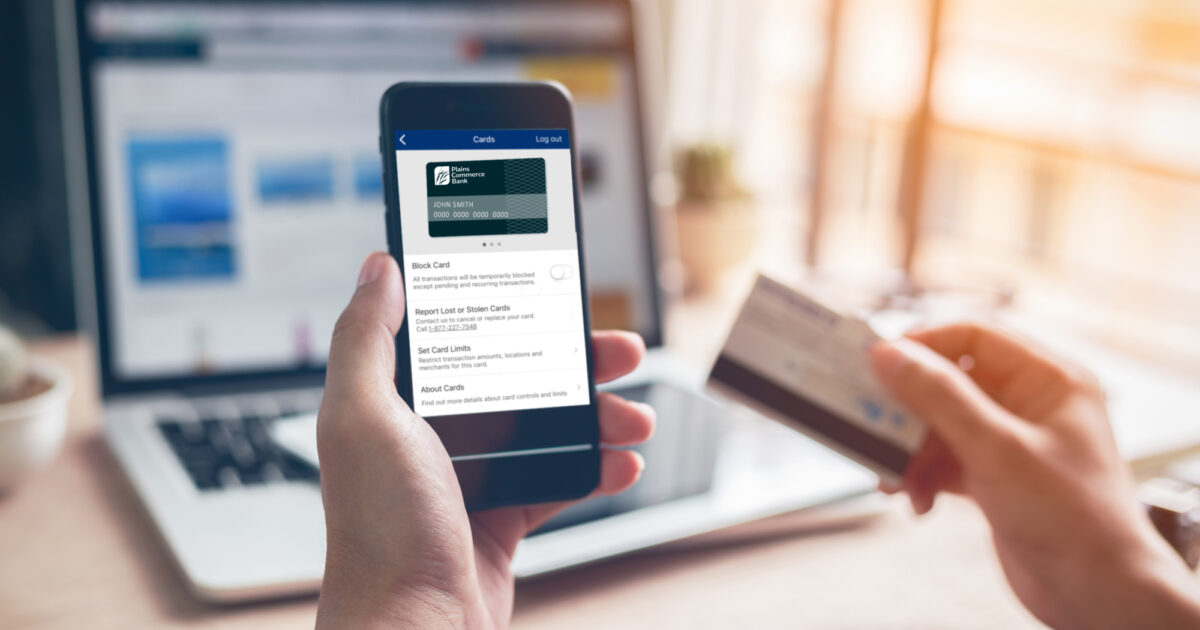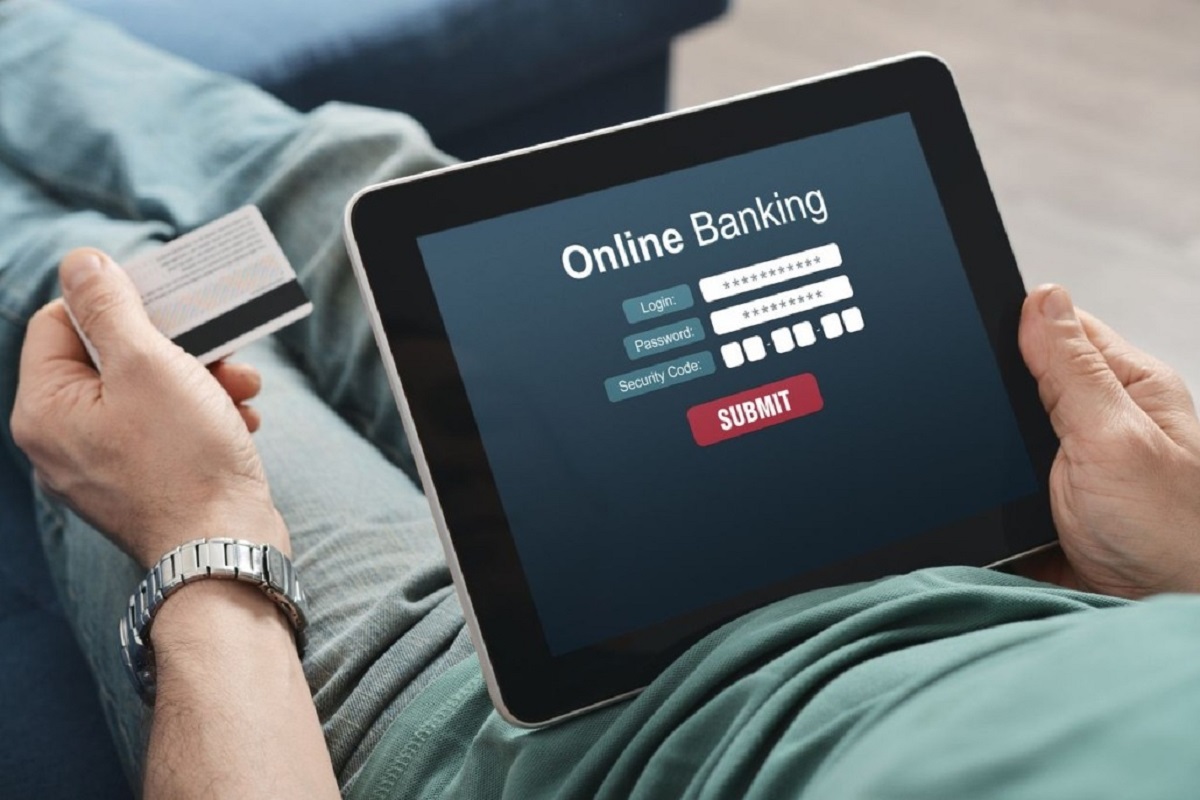Intro
Mobile banking apps have revolutionized the way we manage our finances, providing convenience, accessibility, and security right at our fingertips. With the increasing popularity of smartphones, creating a mobile banking app is a smart decision for financial institutions that want to remain competitive in today’s digital age.
But where do you begin when it comes to developing a mobile banking app? In this article, we will guide you through the fundamental steps involved in creating a successful mobile banking app, from understanding the basics to the launch and maintenance of your app.
Before diving into the technical details, it is important to grasp the significance of mobile banking apps. These apps allow customers to perform a wide range of financial transactions, such as checking account balances, transferring funds, paying bills, and even applying for loans, all from the convenience of their mobile devices.
The rise of mobile banking apps can be attributed to the increasing reliance on smartphones in our daily lives. According to recent studies, the number of smartphone users worldwide is projected to surpass 3.8 billion by 2021. This presents a significant opportunity for financial institutions to tap into the mobile banking market and meet the evolving needs of customers.
Furthermore, mobile banking apps offer a range of benefits to both customers and financial institutions. For customers, these apps provide 24/7 access to their accounts, allowing them to manage their finances anytime, anywhere. They also offer enhanced security features, such as biometric authentication and encryption, to protect sensitive financial information.
For financial institutions, mobile banking apps can streamline operations, reduce costs, and improve customer satisfaction. By offering a user-friendly interface and a seamless user experience, these apps can attract and retain customers, ultimately boosting customer loyalty and engagement.
Overall, developing a mobile banking app is a strategic move for financial institutions aiming to stay competitive and meet the expectations of today’s tech-savvy consumers. In the following sections, we will explore the key features, technologies, design considerations, security measures, and implementation strategies that are essential for creating a successful mobile banking app.
Understanding the Basics of Mobile Banking Apps
Before delving into the technical aspects of creating a mobile banking app, it is crucial to grasp the fundamental concepts and functionalities of these applications. Mobile banking apps serve as a digital interface between customers and their financial institutions, providing a wide range of services and features.
The primary purpose of a mobile banking app is to enable customers to access and manage their financial accounts directly from their mobile devices. This includes activities such as checking account balances, viewing transaction history, transferring funds between accounts, and paying bills. By providing these functionalities, mobile banking apps empower users to have full control over their finances, anytime and anywhere.
In addition to the basic account management features, mobile banking apps often offer additional services to enhance the user experience. These may include features like mobile check deposit, where users can deposit checks using their device’s camera, or the ability to set up account alerts and notifications for balance updates, transaction confirmations, and payment reminders.
Another crucial aspect of mobile banking apps is the integration of digital payment options. With the rise of digital wallets and contactless payments, users expect their banking app to support these functionalities. This allows users to make payments directly from their mobile wallets or use their banking app to connect with popular payment platforms like Apple Pay or Google Pay.
Furthermore, mobile banking apps also provide access to other financial services such as loan applications, investment tracking, and budgeting tools. By offering these additional services, financial institutions can cater to the diverse needs of their customers and provide a comprehensive financial management experience.
It is important to note that mobile banking apps operate on top of a secure infrastructure, utilizing encryption and multi-factor authentication to protect users’ sensitive information. This ensures that transactions and personal data remain secure while providing peace of mind to the app users.
Understanding the basic functionalities and features of mobile banking apps is crucial for building a solid foundation before diving into the technical aspects of development. By comprehending the core aspects of these applications, financial institutions can better align their app development strategies with the needs and expectations of their target audience.
Key Features and Functionality of a Mobile Banking App
A successful mobile banking app should provide users with a wide range of intuitive features and functionalities to enhance their banking experience. These key features not only attract users but also improve their engagement and satisfaction. Let’s explore some of the essential features that every mobile banking app should include:
- Account Access: Users should be able to securely access their accounts and view their current balances, transaction history, and other account details.
- Fund Transfers: Facilitate seamless fund transfers between different accounts, including transfers to other customers within the same financial institution or external transfers to other banks.
- Bill Payments: Allow users to pay their bills directly through the app, enabling them to save time and easily manage their expenses.
- Mobile Check Deposit: Enable users to deposit checks by simply capturing an image of the check using their device’s camera.
- Card Management: Provide features to manage debit or credit cards, such as activating, deactivating, and setting spending limits.
- Account Alerts and Notifications: Allow users to set up personalized alerts and notifications for account activities, such as low balance alerts, large transactions, or upcoming bill due dates.
- ATM and Branch Locator: Help users easily find nearby ATMs and branches, providing them with convenience when they need in-person services.
- Personal Finance Management: Offer tools and features to help users track their expenses, set budgets, and analyze their spending habits, enabling better financial management.
- Biometric Authentication: Implement secure authentication methods like fingerprint or facial recognition to ensure the privacy and security of users’ accounts.
- Customer Support: Provide users with seamless access to customer support, whether it’s through in-app chat, phone calls, or a knowledge base.
It’s worth noting that while these features form the core functionality of a mobile banking app, customization is key. Financial institutions should consider the specific needs and preferences of their target audience when deciding on additional features to include in their app.
Moreover, continuous improvement and keeping up with technological advancements are crucial. As new features and functionalities emerge in the market, it is important to stay updated and integrate those that align with customer needs and expectations, enabling a seamless and innovative banking experience.
Choosing the Right Technology Stack
When it comes to developing a mobile banking app, selecting the right technology stack is vital for ensuring the app’s performance, scalability, security, and overall success. A well-chosen technology stack can streamline development, improve user experience, and facilitate future updates and enhancements. Here are key considerations when choosing the technology stack for your mobile banking app:
Native vs. Cross-Platform Development: Native app development involves creating separate apps for different platforms, such as iOS and Android, using platform-specific languages (Swift/Objective-C for iOS, Kotlin/Java for Android). Cross-platform development, on the other hand, allows using a single codebase to build apps that can run on multiple platforms with frameworks like React Native or Flutter. Consider factors such as budget, time constraints, target audience, and desired app performance to determine the best approach.
Backend Development: A robust and secure backend is crucial for the smooth functioning of a mobile banking app. Choose a backend technology stack that supports scalability, security, and seamless integration with existing banking systems. Technologies like Node.js, Ruby on Rails, or Java with frameworks like Spring Boot can be considered for backend development.
API Integration: Integration with third-party APIs is essential to enable features like payment gateways, account aggregation, or identity verification. Ensure that your chosen technology stack supports easy integration with these APIs and provides excellent documentation and developer support.
Database: Selecting the right database technology is vital for managing customer data securely and efficiently. Relational databases like MySQL or PostgreSQL can be suitable for transactional data, while NoSQL databases like MongoDB or Cassandra can handle large amounts of unstructured data. Consider factors like data volume, security requirements, and scalability when choosing your database technology.
Security Considerations: Security is of utmost importance in mobile banking apps. Ensure that your chosen technology stack provides the necessary security measures, such as encryption, secure data transmission, and authentication protocols. Additionally, consider incorporating features like biometric authentication and device-level security for an added layer of protection.
Performance and User Experience: A seamless and responsive user experience is critical for a successful mobile banking app. Choose a technology stack that provides high-performance libraries, optimized rendering, and efficient memory management to ensure smooth navigation and fast load times.
Developer Skills and Community Support: Consider the availability of skilled developers and a vast community of support for your chosen technology stack. This ensures that you have access to expert advice, documentation, and resources, making it easier to overcome challenges and ensure the app’s long-term sustainability.
Ultimately, the choice of technology stack depends on various factors such as project requirements, budget constraints, timeline, and strategic goals. Collaborating with experienced developers and conducting thorough research will help you make informed decisions and choose the technology stack that best suits your mobile banking app development needs.
Designing the User Interface (UI) and User Experience (UX)
The design of a mobile banking app plays a crucial role in attracting users, enhancing their experience, and promoting engagement. A well-crafted user interface (UI) and user experience (UX) contribute to the app’s usability, accessibility, and overall success. Here are key considerations when designing the UI and UX of your mobile banking app:
User-Centric Approach: Put the user at the center of your design process. Gain a deep understanding of your target audience’s needs, preferences, and pain points through user research, surveys, and usability testing. Incorporate this knowledge into the design to create a user-centric app tailored to their expectations.
Clean and Intuitive Interface: Aim for a clean and clutter-free interface that allows users to navigate effortlessly. Use a consistent layout, logical information hierarchy, and intuitive icons to guide users through the app and make interactions seamless.
Responsive Design: Ensure that the app is responsive and adapts to various screen sizes and orientations, providing a consistent experience across different devices. Consider the different resolutions and aspect ratios of smartphones and tablets to optimize the layout and visual elements.
Visual Appeal: Create a visually appealing app that aligns with your brand identity. Use a balanced color palette, typography, and imagery that evoke trust, professionalism, and a sense of security. Effective use of white space and visual hierarchy can improve readability and highlight important information.
Streamlined User Flows: Simplify complex processes and minimize the number of steps required for users to perform tasks. Make use of progressive disclosure techniques, such as hiding advanced options until they are needed, to keep the interface clean and reduce cognitive load.
Consistency Across Platforms: If developing for multiple platforms, ensure a consistent visual and interactive experience across all platforms. While platform-specific design guidelines should be followed, maintain a unified brand identity and coherent user experience throughout.
Accessibility: Design your app with accessibility in mind, ensuring that all users, including those with disabilities, can easily access and use the app. Pay attention to elements like color contrast, font size options, and support for assistive technologies.
Usability Testing: Conduct thorough usability testing with real users to identify pain points, usability issues, and areas for improvement. Iterate on the design based on user feedback to refine the UI and UX and ensure a seamless experience.
Microinteractions and Animations: Utilize subtle animations and microinteractions to provide feedback, guide users, and create delightful moments within the app. These small interactions can make the user experience more engaging and enjoyable.
Collaboration with Designers: Work closely with experienced UI/UX designers to bring your vision to life. Collaborative design sessions, wireframing, and prototyping can help visualize the app’s flow, interactions, and overall design direction.
By prioritizing user needs, creating an intuitive interface, ensuring consistency, and incorporating thoughtful design elements, you can design a mobile banking app that not only meets user expectations but also stands out in the highly competitive app market.
Backend Development and Integration
The backend development of a mobile banking app is crucial for handling business logic, data storage, and ensuring seamless integration with external systems. It involves building a robust and secure server-side infrastructure that supports the functionality of the app. Here are key considerations for backend development and integration in a mobile banking app:
Security and Compliance: Security should be a top priority when developing the backend of a mobile banking app. Implement strong encryption protocols to protect sensitive user data during transmission and storage. Adhere to industry standards and regulatory requirements, such as PCI-DSS and GDPR, to ensure compliance and build user trust.
Scalability: Plan for scalability from the early stages of backend development. As the user base grows and transaction volumes increase, the backend infrastructure should be able to handle higher traffic loads. Employ scalable technologies like containerization or auto-scaling to ensure that the app can handle increased demand without performance degradation.
API Development: Design and develop well-documented APIs that allow seamless integration with external systems and third-party services. APIs should be secure, efficient, and scalable, making it easy to add new features and functionalities to the app in the future. Implement proper versioning and authentication mechanisms to ensure API security and backward compatibility.
Database Management: Choose a suitable database technology based on your app’s requirements. Relational databases like MySQL or PostgreSQL are often used for transactional data, while NoSQL databases like MongoDB or Cassandra can handle large volumes of unstructured data. Optimize database access patterns and ensure data consistency and integrity.
External Integrations: Mobile banking apps often need to integrate with external systems, such as payment gateways, identity verification services, or account aggregation platforms. Select technologies that provide easy integration with these systems through well-documented APIs and SDKs. Conduct thorough testing to ensure seamless data exchange and transactional integrity.
Real-time Updates: Implement mechanisms for real-time updates, allowing users to receive immediate notifications about their transactions, account activities, or security alerts. Technologies like WebSockets or push notifications can enable real-time communication between the app and backend systems, enhancing user engagement.
Logging and Monitoring: Set up robust logging and monitoring systems to track app performance, identify errors, and gather insights for continuous improvement. Utilize tools that provide detailed metrics on server response times, error rates, and resource utilization to proactively address issues and optimize performance.
Testing and Quality Assurance: Establish a comprehensive testing strategy to ensure the stability and reliability of the backend system. Conduct unit tests, integration tests, and security audits to identify and address vulnerabilities. Utilize frameworks and automation tools to streamline the testing process and ensure high-quality code delivery.
Collaboration with Backend Developers: Collaborate closely with experienced backend developers to ensure smooth integration with frontend components and optimal performance. Regular communication, code reviews, and agile development practices can foster productive collaboration and result in a robust and reliable backend system.
The backend development of a mobile banking app requires careful consideration of security, scalability, integration, and performance. By investing in a well-structured backend architecture and adopting best practices, you can ensure a secure and seamless user experience while efficiently managing the app’s business logic and data.
Security and Regulations in Mobile Banking Apps
Security is of paramount importance in mobile banking apps, given the sensitive nature of financial transactions and personal information involved. Building a secure app that adheres to industry regulations instills trust in your users and protects them from potential threats. Here are key considerations for ensuring security and compliance in mobile banking apps:
Encryption: Implement strong encryption algorithms to protect sensitive data, both during transmission and storage. Utilize SSL/TLS protocols for secure communication between the app and server, ensuring that data remains confidential and tamper-proof.
Authentication: Implement multi-factor authentication (MFA) to enhance security. This can include a combination of passwords, biometric authentication (fingerprint or facial recognition), or one-time passcodes sent via SMS or mobile apps. User authentication should also include mechanisms to prevent unauthorized access, such as account lockouts or session timeouts.
Secure Data Storage: Securely store user data, including personal information, account details, and transaction records. Utilize encryption and follow industry best practices for securing databases, applying appropriate access controls, and regularly patching and updating systems to mitigate vulnerabilities.
Compliance with Regulations: Adhere to the regulatory requirements specific to your target market, such as the Payment Card Industry Data Security Standard (PCI-DSS) or the General Data Protection Regulation (GDPR). Ensure that your app meets these regulations by implementing appropriate security measures, obtaining necessary certifications, and safeguarding user privacy.
Tokenization and Secure Payments: Utilize tokenization to protect sensitive payment information, such as credit card details. This involves replacing sensitive data with unique tokens, minimizing the risk of data breaches. Implement secure payment gateways and follow industry standards for handling payment information, such as the Payment Application Data Security Standard (PA-DSS).
Fraud Detection and Prevention: Implement robust fraud detection algorithms and monitoring systems to identify suspicious activities, such as account takeover attempts or unauthorized transactions. Utilize machine learning and behavioral analysis techniques to identify patterns and flag potential fraudulent activities, protecting both users and the financial institution.
Regular Security Audits and Penetration Testing: Conduct regular security audits and penetration testing to identify vulnerabilities and proactively address them. Engage third-party security experts to assess the app’s security posture, identify weaknesses, and recommend measures to enhance security.
User Education: Promote user awareness and education regarding common security threats, such as phishing, malware, or social engineering attacks. Provide clear guidelines on safe usage practices, the importance of strong passwords, and how to identify and report suspicious activities.
Continuous Monitoring and Incident Response: Implement a robust monitoring system to track and respond to security incidents. Use intrusion detection systems and log analysis tools to monitor for unusual activities or indicators of compromise. Have a proper incident response plan in place to handle security breaches or data breaches, ensuring quick response, containment, and recovery.
By incorporating strong security measures, adhering to regulations, and staying vigilant against emerging threats, you can build a mobile banking app that puts user security and privacy at the forefront, building trust with your customers and maintaining a secure environment for their financial transactions.
Testing and Bug Fixing
Testing is a crucial phase in the development of a mobile banking app to ensure its functionality, security, and reliability. Thorough testing and effective bug fixing processes are essential to deliver a high-quality app that meets users’ expectations. Here are key considerations for testing and bug fixing in mobile banking app development:
Test Planning and Strategy: Develop a comprehensive test plan that outlines the testing scope, objectives, and timelines. Identify the key functionalities, scenarios, and user flows to be tested, and determine the right testing methodologies, such as functional testing, usability testing, performance testing, security testing, and compatibility testing.
Functional Testing: Verify that all app functions work as intended and meet the specified requirements. Test core features such as account access, fund transfers, bill payments, and notification systems. Conduct positive and negative testing to cover various scenarios and ensure all edge cases are considered.
Usability Testing: Evaluate the app’s user experience (UX) by conducting usability tests with real users. Gather feedback on the app’s design, navigation, and overall ease of use. Identify any user experience issues or pain points and make necessary improvements to enhance the overall app usability.
Performance Testing: Test the app’s performance under different scenarios and usage loads. Measure and optimize response times, server scalability, and resource utilization. Perform load testing to ensure the app can handle high volumes of user traffic without performance degradation.
Security Testing: Conduct rigorous security testing to identify vulnerabilities and potential security flaws. Test for common security threats such as injection attacks, session management vulnerabilities, or data leakage. Collaborate with security experts to perform penetration testing and vulnerability assessments to uncover any weaknesses in the app’s security infrastructure.
Compatibility Testing: Ensure that the app functions correctly on various devices, operating systems, and screen sizes. Test on different smartphones, tablets, and both Android and iOS platforms. Validate the app’s compatibility with different versions of operating systems, browser configurations, and device resolutions.
Bug Fixing and Issue Tracking: Establish an efficient bug tracking system to document and prioritize reported issues. Assign developers to address reported bugs promptly and track the status of bug fixes. Conduct regular bug triage meetings to review and prioritize the reported issues based on their severity and impact on the app’s functionality.
Continuous Integration and Testing: Implement continuous integration and continuous delivery (CI/CD) practices, automating the build, testing, and deployment processes. This ensures that code changes are regularly tested, integrated, and deployed, reducing the risk of introducing new bugs and streamlining the overall development cycle.
User Acceptance Testing (UAT): Collaborate with a group of real users to perform user acceptance testing. Allow users to test the app in a real-world scenario, gather feedback, and address any usability issues that may arise. UAT helps ensure that the app meets user expectations, resulting in better user adoption and satisfaction.
Regression Testing: Perform regression testing to verify that bug fixes and new feature implementations do not introduce new issues or negatively impact previously tested functionalities. Repeatedly test critical features and user flows to ensure their stability throughout the development and enhancement processes.
Documentation: Document all test cases, test scenarios, and testing results to maintain a comprehensive record. Include steps to replicate reported issues, enabling developers to understand and address bugs effectively. Documenting the testing process will also help ensure consistent testing practices across different testing cycles.
Testing and bug fixing are iterative processes that require attention to detail and thoroughness. By implementing a robust testing strategy and adopting a proactive approach to bug fixing, you can deliver a reliable and user-friendly mobile banking app that meets the highest quality standards.
Launching and Marketing Your Mobile Banking App
Launching and marketing your mobile banking app effectively is crucial to maximize its visibility, attract users, and drive adoption. A well-executed launch plan and targeted marketing strategies can help increase app downloads, engage users, and establish a strong presence in the market. Here are key considerations for launching and marketing your mobile banking app:
Release Planning: Develop a comprehensive release plan that includes the app launch date, target markets, and intended audience segments. Consider different rollout strategies, such as a soft launch in specific regions or a phased release, to gather user feedback and make necessary improvements before a full-scale launch.
App Store Optimization (ASO): Optimize your app listing on app stores to improve its visibility and discoverability. Conduct keyword research to determine relevant keywords for your app’s target audience, and incorporate them in the app title, description, and metadata. Use compelling visuals, such as high-quality app screenshots and an attention-grabbing app icon, to entice users to download your app.
App Store Submission: Follow the app store guidelines for content and submission requirements. Ensure that your app meets all the necessary guidelines, including security and compliance regulations, to ensure a smooth submission process.
User Onboarding and Education: Provide a seamless and intuitive user onboarding experience to guide users through the app’s features and functionalities. Offer tutorials, tooltips, or interactive walkthroughs to help users understand how to navigate the app, complete transactions, and utilize key features. Educate users on the benefits of using your app, highlighting its convenience, security, and unique features compared to traditional banking methods.
App Promotion: Develop a comprehensive marketing strategy to promote your mobile banking app. Leverage various channels like social media, email marketing, paid advertising, and content marketing to create awareness and generate app downloads. Partner with influencers or financial industry publications to gain exposure and credibility, and utilize online communities or forums where your target audience is active.
User Referral Programs: Encourage your existing users to promote your app by offering referral incentives. Implement a referral program that rewards users for inviting friends or family to download and use the app. This not only helps increase app downloads but also encourages user engagement and loyalty.
User Feedback and Ratings: Actively seek and engage with user feedback and ratings on app stores and other platforms. Respond to user reviews, address their concerns, and take their feedback into account for future app updates. Positive ratings and reviews can significantly impact your app’s credibility and attract new users.
Offline Marketing Activities: Consider offline marketing activities to further promote your mobile banking app. Participate in industry-related events, sponsor relevant conferences or seminars, or collaborate with local businesses to raise awareness about your app. Use traditional advertising channels like print media, radio, or TV to reach a broader audience, if feasible and within budget.
Continuous App Improvement: Regularly release updates and enhancements based on user feedback and market trends. Pay attention to user analytics and in-app engagement data to identify areas for improvement and optimize the app’s performance and user experience over time.
Customer Support and Engagement: Offer excellent customer support to address user inquiries, grievances, or technical issues promptly. Provide multiple channels for users to reach out, such as in-app chat, phone support, or email. Engage users through personalized notifications, relevant content, or loyalty programs to foster a long-term relationship with your app’s users.
Launching and marketing your mobile banking app effectively requires a well-planned strategy and ongoing effort to engage users and continuously enhance the app’s features and functionality. By following these key considerations, you can create awareness, attract users, and build a loyal user base for your mobile banking app.
Maintenance and Continuous Improvement
Maintenance and continuous improvement are essential to ensure the long-term success, reliability, and relevance of your mobile banking app. Regular updates, bug fixes, and enhancements are necessary to provide users with a seamless and secure banking experience. Here are key considerations for the maintenance and continuous improvement of your mobile banking app:
Regular Updates and Bug Fixes: Continuously monitor user feedback, bug reports, and analytics data to identify and address issues promptly. Release regular updates and bug fixes to improve the app’s stability, security, and performance. Stay responsive to user needs and expectations by consistently addressing their concerns and enhancing the app based on user feedback.
Security Updates: Stay vigilant against emerging security threats and promptly address any vulnerabilities. Regularly update security protocols, encryption algorithms, and access controls to keep pace with changing security standards. Conduct regular security audits and penetration testing to identify and mitigate potential risks.
Feature Enhancements: Continuously assess user needs and market trends to identify opportunities for new features or functionality improvements. Analyze user behavior, app usage data, and competitor offerings to optimize existing features and introduce new ones that align with user expectations.
Performance Optimization: Continuously monitor and optimize the app’s performance to ensure fast response times, smooth navigation, and minimized downtime. Analyze performance metrics such as server response times, app launch times, and network latency to identify bottlenecks and improve overall performance.
User Experience (UX) Enhancements: Keep the user experience at the forefront of app maintenance. Continually monitor user feedback, conduct user testing, and track user interactions to uncover areas for UX improvement. Refine the app’s navigation flow, simplify complex processes, and incorporate user-friendly design elements to enhance overall user satisfaction.
Support for New Technologies and Platforms: Stay up-to-date with new technologies, operating system updates, and platform-specific guidelines. Ensure your app remains compatible with the latest mobile devices, operating systems, and emerging technologies. Leverage new features and opportunities provided by platforms to deliver an enhanced user experience.
Analytics and Performance Monitoring: Continuously monitor user analytics and app performance metrics to gain insights into user behavior, identify user pain points, and measure the app’s overall performance. Leverage analytic tools to track user engagement, conversion rates, and app usage patterns, allowing you to make data-driven decisions for further improvements.
Quality Assurance and Testing: Maintain a robust quality assurance process to minimize the occurrence of bugs and ensure consistent app performance across different devices and platforms. Conduct regular testing, including regression testing, compatibility testing, and usability testing, to identify and rectify any issues or concerns.
User Communication and Feedback: Establish effective communication channels to gather user feedback and address user concerns promptly. Encourage users to provide feedback through in-app surveys, support tickets, or user forums. Engage with users and acknowledge their feedback, making them feel valued and appreciated.
Continuous Learning and Industry Updates: Stay updated with industry trends, best practices, and regulatory changes related to mobile banking apps. Regularly engage in professional development activities, attend industry conferences, and follow relevant publications and communities to enhance your knowledge and stay ahead of changes and advancements in the industry.
By prioritizing maintenance and continuous improvement activities, you can keep your mobile banking app relevant, secure, and user-friendly. Regular updates, bug fixes, and enhancements demonstrate your commitment to providing an exceptional app experience, enhancing user satisfaction, and staying competitive in the ever-evolving mobile banking landscape.







